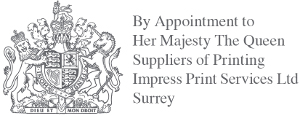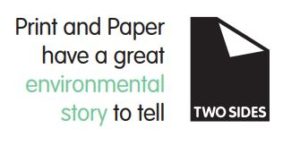Over 72% of paper consumption in Europe is recycled, making it one of the most recycled of all materials
Most of this is utilised within the European paper industry where it is an essential raw material, particularly for packaging and newsprint. Recycling paper is the most eco-efficient waste management option and the use of recycled fibre complements the need for virgin wood fibre to meet societal demands for paper and board products.

Paper is one of the most recycled products
The paper recycling process starts with you. After paper has been used and placed in a recycling bin it is collected along with other used paper products from businesses and households. More than 60 million tonnes of used paper are collected in Europe each year. The main sources of paper collection are 50% from trade and industry, 40% from households, and 10% from offices. 1
In Europe, the recycling rate of paper was 72.5% in 2016, calculated as the ratio of previously-made paper recycled for use as paper products again, compared to the total consumption of paper and board. Just under 85% is utilised within the European paper industry with the rest being exported. 2 Because some paper products are retained for the long-term (for example books and archived documents), are otherwise disposed of after use (such as sanitary products) or are subsequently used for other purposes (such as insulation), the theoretical maximum recycling rate is 78%. Nevertheless, the organisations representing the paper recycling value chain have committed to achieving a rate close to this maximum – 74% by 2020. 3 In comparison, the European plastics industry has a recycling rate of 29.7%. 4
“Paper recycling is perceived by the public as being the most effective way to reduce environmental impacts of using paper. For the industry, recycled fibres are an indispensable source of raw materials, supporting industry’s resource efficiency.”
European Paper Recycling Council, 2017
Paper for recycling is an essential raw material
To maintain quality, it’s important that paper is collected separately from other materials. It can then be sorted and graded to determine the end uses it will be suitable for. Then,
the recovered paper will be mixed with water so that the fibres can be recovered. During this process, contaminants are removed, the fibres cleaned and, if necessary, ink is removed. The resulting pulp may then be used to produce 100% recycled paper, or mixed with virgin fibre depending on the quality characteristics required. 5
Generally, recovered fibre is used to produce new paper of an equal or lower grade. For example, while it is possible to use fibre from recovered copy paper to make new copy paper it is more straightforward to use recovered office paper to produce household tissue. In many cases, recovered fibre is reused into the type of product from which it was recovered, such as packaging or newsprint. 6
Paper for recycling is an essential raw material for the paper industry. In Europe, 47.8 million tonnes of it was used in 2016, equating to 46.2% of all raw materials. Packaging consumes
the greatest proportion (70.4% of the total), followed by newsprint and other graphic papers (20.3%). 7
Recycling of fibre is more eco-efficient than other waste management options
The most eco-efficient use of wood fibre for paper and paperboard is within a ‘cascading system’. In a simple cascading system, fresh fibre is removed from the forest and used to make wood or paper products which are recovered after use and the recycled fibres are reused in paper and board manufacturing until they are unsuitable, at which point they are burned for energy, displacing fossil fuel. 8
Most paper-based products are designed so that they fit into paper and board collection schemes and the fibres can be recycled again in paper and board manufacturing.
“Recovery and recycling is an integral part of using resources efficiently, reducing consumption footprints, providing sustainable products and thereby contributing to creating more sustainable lifestyles.”
World Business Council for Sustainable Development, 2017
Recycled and virgin fibre are complementary
Both recycled and virgin fibre have benefits. When compared to the manufacture of virgin fibre, production of recycled pulp generally requires less energy consumption and has lower
emissions to air. Yet virgin fibre production typically uses more renewable energy and creates less solid waste. However, because virgin and recycled fibres are part of a single complex system, it is very difficult to reliably compare their environmental attributes. In practice, recycled fibre would not exist if virgin fibre were not harvested and societal demands for paper and board products could not be met without both. 9
A fibre can be recycled several times, yet not indefinitely. Therefore, there is a continuous need to feed the inflow of recovered fibre with paper products made of virgin pulp. Paper recycling needs to continuously incorporate a certain amount of fresh fibres for three main reasons: strength – cellulose fibre deteriorates each time it is recycled; quality – some products need top quality paper for recycling, (like cuttings and shavings from printers), which is not widely available or have technical characteristics that demand virgin fibre; availability – around 22% of the paper used is not possible to collect or recycle. 10
- European Paper Recycling Council, 2017
- European Paper Recycling Council, Monitoring Report 2016, 2018
- European Paper Recycling Council, European Declaration on Paper Recycling 2016-2020, 2017
- Plastics Europe, Plastics – the Facts, 2016
- European Paper Recycling Council, 2017
- WBCSD, Fresh & Recycled Fiber Complementarity, 2017
- CEPI, Key Statistics, 2016
- WBCSD, Fresh & Recycled Fiber Complementarity, 2017
- Ibid
- European Paper Recycling Council, 2017


